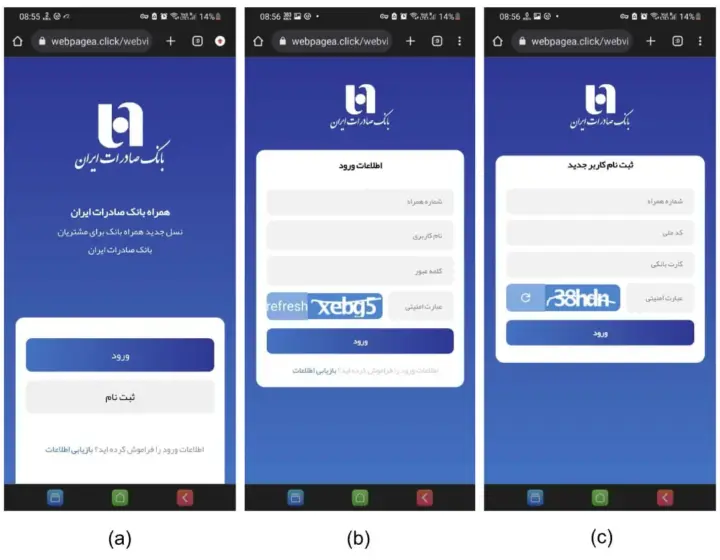Recent findings by cybersecurity experts have shed light on the alarming rise of cybercrime in Iran, posing a significant threat to the financial security of its citizens. A comprehensive report by Zimperium has uncovered a staggering 245 counterfeit mobile applications, cleverly designed to mimic popular Iranian banks.
This extensive campaign, discovered by Sophos specialists in July 2023, aims to exploit unsuspecting individuals by pilfering personal data and savings through phishing techniques and malicious software. What initially started with 40 applications impersonating 4 major Iranian banks has now grown to involve 12 banks and a whopping 245 counterfeit applications.

The initial versions of these fraudulent applications were capable of stealing sensitive bank account credentials and credit card information, intercepting SMS traffic to hijack one-time passwords used for authentication, and even hiding their own icons to prevent easy removal. However, the latest iteration of the campaign has seen hackers introduce advanced features to their malware, enabling them to collect credentials and steal information more effectively.
Notably, the attackers have focused their efforts on Xiaomi and Samsung devices, leveraging specific functions of their malicious software. Additionally, there are indications that the cybercriminals are actively developing a variant of the malware specifically targeting iOS devices.
Aside from the counterfeit applications, experts have also linked these perpetrators to phishing attacks that utilize fake websites, targeting the customers of the same banks. These fraudulent websites are meticulously designed to closely mimic the original sites, making it difficult for users to discern their authenticity. Information stolen on these sites is then directly sent to Telegram channels controlled by the hackers.
While the specific threat group responsible for this campaign and the exact number of affected users remain unclear, the sophistication of the phishing campaigns is evident. These cybercriminals have gone to great lengths to create fake websites that closely resemble the legitimate banking sites, aiming to deceive unsuspecting individuals.
Interestingly, this is not an isolated incident. Just last week, researchers from Microsoft uncovered a similar information theft campaign targeting customers of Indian banks. In this case, cybercriminals were tricking users into installing fraudulent banking applications on their devices, masquerading as legitimate entities such as financial institutions, government services, and utility companies.
The rise in cybercrime targeting financial institutions highlights the need for increased vigilance and cybersecurity measures. Individuals must remain cautious when downloading mobile applications, ensuring they only use trusted sources such as official app stores. Additionally, regularly updating devices and using robust security software can help mitigate the risks associated with cyber threats.
Authorities and financial institutions also play a crucial role in combating cybercrime. By implementing stringent security measures, conducting regular audits, and educating customers about potential threats, they can work towards safeguarding the financial security of their clients.
In conclusion, the escalating cybercrime in Iran, as evidenced by the proliferation of counterfeit mobile applications and phishing attacks, poses a significant threat to the financial security of local citizens. It is imperative that individuals, financial institutions, and authorities collaborate to combat these malicious activities and protect the interests of the public.
